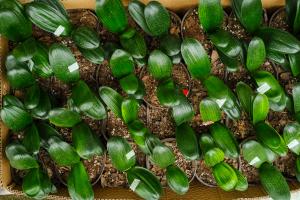Repotting a Bamboo Plant: A Step-by-Step Guide
Introduction
Bamboo plants are a popular choice for homeowners as they add a touch of fresh greenery and a unique aesthetic to any home. However, with time, these plants can outgrow their current containers and require repotting. In this article, we will discuss the process of repotting a bamboo plant in a step-by-step guide.
Step 1: Gather Supplies
Before you begin repotting your bamboo plant, you will need to gather some supplies. These include a pair of gloves, a clean repotting container, potting soil, mulch, fertilizer, and a watering can.
Step 2: Remove the Bamboo Plant from its Current Pot
Start by carefully removing your bamboo plant from its current pot. Use your hands to loosen the soil around the base of the plant and gently lift it out. Be sure to wear gloves to protect your hands.
Step 3: Inspect the Roots
Once you have removed the plant from its pot, inspect the roots of the bamboo plant. Trim any roots that are dead, diseased, or damaged as these can affect the growth of the plant.
Step 4: Prepare the New Container
Take your clean repotting container and fill it with fresh potting soil. Be sure to leave enough space at the top of the container to accommodate your bamboo plant.
Step 5: Repot Your Bamboo Plant
Place your bamboo plant in the new container and gently pack soil around the roots until the plant is securely in place. Be sure to water the plant thoroughly after repotting.
Step 6: Add Mulch and Fertilizer
Add a layer of mulch to the top of the soil to help retain moisture and prevent weeds. Additionally, you can add a slow-release fertilizer to provide your bamboo plant with essential nutrients.
Step 7: Care for Your Repotted Bamboo Plant
After repotting, it is essential to care for your bamboo plant properly. Water the plant regularly, keeping the soil moist but not waterlogged. Additionally, be sure to provide your plant with adequate light and avoid exposing it to extreme temperatures.
Conclusion
Repotting a bamboo plant is a simple and straightforward process that can help ensure its continued growth and health. By following the steps above, you can successfully repot your bamboo plant and enjoy its beauty for years to come.

 how many times do yo...
how many times do yo... how many planted tre...
how many planted tre... how many pine trees ...
how many pine trees ... how many pecan trees...
how many pecan trees... how many plants comp...
how many plants comp... how many plants can ...
how many plants can ... how many plants and ...
how many plants and ... how many pepper plan...
how many pepper plan...































